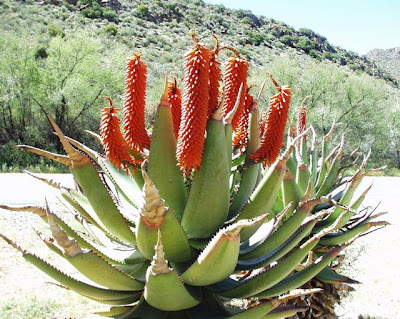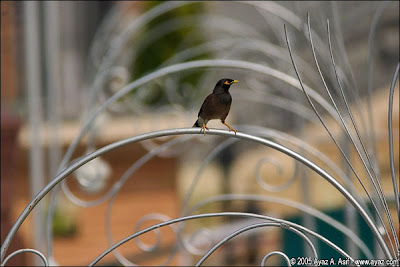Last Sunday, while browsing over different books and magazines spread on ground in the old book corner of Lahore Cantt.’s main department store, I came across an old magazine. Its title was torn off, as also was the name of the author who wrote this article.
Having glanced over a few lines, I got interested to know more about what the writer wanted to say, so I got this mag from the vendor. Having found the article profoundly analytical, thought provoking and all said in a particularly simple, to the point manner I thought I should share this with my fellow Pakistanis to see what went wrong with us and how can we redress it even now.
Normally I do try to put up posts on our blog which are original, however, we do reproduce off and on such matter which could be of interest to our readers in Pakistan or so many other readers who regularly visit this site from all over the globe.
And now the article....
NO VISION——NO SUCCESS
- Lack of a national and individual vision
The price we pay for having not been able to answer this question in a lifetime of sixty years is chaos and confusion. Without vision there is no commitment and without commitment, there is no success. It is as simple as that.
- No vision means, complete confusion!
Vision is the uniting force for a nation. We in Pakistan need it more than any one else. Because of the diverse nature of our people “Peaceful and Prosperous Pakistan” could be a vision for Pakistanis. It should be our declared policy that we want to build better life for our people. As the wise say “Actions speak louder than words”, our actions must support OUR vision. Our mission to lead the Islamic world or the whole world is a bittoo much. We should base our mission / goal on more realistic basis. If we do
small things right, may be later, we can do the big things right. There should be an open debate on national vision. And the national vision must be shared by all the people, all provinces, the whole nation. It should not represent an individual or one institution; it must be a nation based approach, widely debated and widely shared.
- Convert vision into measurable and specific / short / long term goals
· Poverty Alleviation
· Health for all
· Education, science exploration, Freedom of Enquiry, commitment to truth and reward for excellence.
· Justice (law and order)
· Employment and equal opportunity
· Promotion of music, art, culture and all forms of creativity
· Tolerance of other religions, their ways of thinking and living
· Being at peace with history
· Our global role
· National defense, military as well as ideological
Islam, Islam, Islam
We have to come up with a national vision that incorporates Islam because it is the religion of the majority of Pakistanis. By the grace of Allah I am a Muslim and nobody other than Allah has the power to decide otherwise. Law of opposites suggests that the more the hype less the action. Let us stop clamoring Islam, Islam and Islam and focus on doing what it demands us to do. One of the greatest hurdles in our development is the narrow and wrong interpretation of Islam. This attitude sends a signal to the world that Islam is their enemy. In fact it is the greatest friend any one can possibly have. Islam brings good news for the people, while our brand of Islam only brings bad news. How come? The only way forward in this regard is having an open national debate on the issue of Islam and then we take a vote on the course of action we want to take. We cannot, and we should not try to, change Islam. We may however, develop some form of consensus on the issue of Islam. People do what they clearly see to be in their benefit. If we can make them see that Islam is in their benefit, they will welcome it. If they see better quality of life, justice, equality, freedom of speech, law and order, prosperity coming their way, they are not mad to resist it.
Islam stands for peace, prosperity, individual liberty, justice, equality, fair distribution of wealth and opportunity, learning question and search for answers, freedom of speech, accountability. That’s the Islam I know about.
India our neighbor and accidental benefactor
Indian leadership secretly hopes that our nation would dissolve in due course of time. We have tried very hard to prove them right. Unfortunately Indian leadership either has sadly not shown great visionary ability over the years. They facilitated the making of Pakistan and facilitated, though unintentionally, making Pakistan a nuclear power. In that sense, we owe a lot to them. There must be normal friendly relations with India, but not at the cost of Pakistan. Ours is a poor country and we cannot afford expensive nuclear weapons. But we must see things in right context. We live in a real dangerous world, where weaker nations are attacked and wiped out just on the flimsiest of evidence and arguments as thin as fading mist. One can bet one’s last penny on the fact that in the light of the recent international events a dozen countries are aspiring to go nuclear.
Are all Great men born in the West?
International media is dominated by the USA and its allies. It has falsely created an image that all great men are born in the west. If greatness is defined as acts of self sacrifice, act of character, acts of standing steadfast in the face of opposition and hardship, risking life and limb for a cause, working for human development and stretching the domain of knowledge; then we will find many a great men in Pakistan. If a great man means rich and famous then it is hard to match Americans. In all honesty, it is much more difficult to do great deeds in chaotic conditions. Even Steven Covey, Anthony Robbins, Andrew Matthews, and Norman Vincent Pale, the custodians of positive (constructive / solution focused) thinking, will be hard pressed to retain their sanity in chaotic conditions. Had Bill Gates been born in chaotic country, he would probably be banging his head trying to talk sense into people and would be stuck in perennial debates on issues and would have no energy left for action. At a stage, the debates would have been so internalized in his head that he would have been swaying in a whirlpool of confusion, completely paralyzed for action.
World Powers are a dangerous reality
We cannot wish them away
The moral superiority of the west is a story of the past; lately they come up with amazingly inconsistent and flimsy arguments. They spy on UNO and Embassies and respond with great ease that “these things happen”. They attack sovereign nations and kill hundreds and thousands innocent civilians. In other words, any or every breach of morality and international law is just talked away or explained away. This situation puts us in a very dangerous position. We must watch our step, every step. If there was ever a moral world, it is gone. The age of innocence, if ever there was one, is over. Discretion must be the patron saint of our policy towards the great powers.
Some of the great powers are decidedly being led by men almost completely devoid of rationality (America or any other country is not inherently an enemy or inherently a friend. We may speak the language they understand. . Americans, despite all their limitations, are product of a tradition of debate and rationality. Let us talk to them in their language. There is hardly such a thing as absolutely free foreign policy. Recently BBC showed a programme tracking relationships between the British Prime Ministers and US Presidents of the last fifty years. It clearly demonstrated that there was no such thing as absolutely free foreign policy even for countries like Britain, Japan, France and Germany. We live in a real world. Our national vision has to become realty in the context of real world.
Father of the nation said: “character lost, everything lost”. Character is committing to cause and standing steadfast in the face of hardship and opposition. Small individual contributions tally up into national greatness. On the other hand, small individual dishonesties tally up into national disasters. Sadly, it is the part of our national mentality that we are extremely flexible in front of the powerful and extremely rigid in front of the weak.
Most of the Pakistanis want to go abroad. Why? In one word: injustice. We may go on debating about the greatness of our country for seven days and seven nights, the fact is that most of us want to go abroad. Sadly it is most skilled and most educated who end up going abroad. Government of Pakistan may partially be responsible for this, but essentially it’s we the people ourselves who are. Unfairness upon unfairness heaped upon an individual makes him think that there is rosy ideal world in the west and thus immigrate.
We have certain phenomenal qualities if only we learn to use them constructively, we are the unique adventurers. When I was studying in the UK my friends from other countries asked me what was my country like. I responded “It is an adventurous country”. Everyday is a new adventure. Adventure of such magnitude that would put Indiana Jones movies to shame.
We the creative
We find creative ways to bypass the law. We find creative ways to find short cuts to learning and education. Everyday we start a new experiment in politics. In that sense, we are the most creative nation on earth. Wake up friends! Every action has a reaction. This chain of cause and effect snowballs into an avalanche of troubles.
Want to offer Comments on this post? Click on the CommentsTab following this line.


























